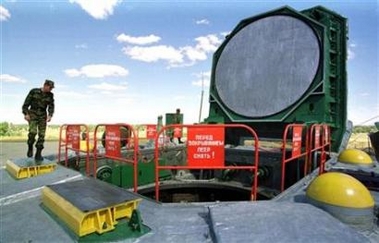Report: Risk of nuclear warfare rising
(AP)Updated: 2007-06-12 08:36
STOCKHOLM, Sweden - The world's top military powers are gradually dismantling their stockpiles of nuclear arms, but all are developing new missiles and warheads with smaller yields that could increase the risk of atomic warfare, a Swedish research institute said Monday.
| ||||||
SIPRI for the first time counted North Korea among the world's nuclear countries, because of its underground test explosion of an atomic device last October. While saying it remains unclear whether the communist country has developed a deliverable nuclear weapon, the institute estimated North Korea could have produced about six nuclear bombs, based on its stockpiles of plutonium.
Iran is a potential member of the nuclear club if it decides to turn its uranium enrichment program to military use, Anthony said - something the US and its allies suspect is Tehran's plan but Iranian leaders deny.
"Iran could appear on this list, but at the earliest five years from now," Anthony said.
The US, Russia, China, France, Britain, Pakistan and India are known to have nuclear weapons, while Israel is thought by most experts to have them.
The report estimated those nations had 11,530 warheads available for delivery by missile or aircraft at the start of 2007, with Russia and the United States accounting for more than 90 percent - 5,614 in Russia and 5,045 in US.
Both countries are reducing their stockpiles as part of bilateral treaties, but are developing new weapons as they modernize their forces. Britain and France also plan to deploy new nuclear weapons, the institute said.
India, Pakistan and Israel each have dozens of warheads, but their stockpiles are believed to be only partly deployed, the institute said.
"India and Pakistan are both thought to be expanding their nuclear strike capabilities, while Israel seems to be waiting to see how the situation in Iran develops," it said.
The United States remained the world's biggest military spender last year, devoting about $529 billion to its military forces,the report said.
US military spending grew from $505 billion in 2005 mainly because of the "costly military operations" in Iraq and Afghanistan, SIPRI said. "This massive increase in US military spending has been one of the factors contributing to the deterioration of the US economy since 2001," it said.
The US was followed by Britain and France in military spending.
Russia, which spent $34.7 billion on arms, has used its energy wealth to revive national pride, to restore its influence "in surrounding countries and to maximize its geopolitical power," SIPRI said.
All the numbers were figured in 2005 dollars.
International arms sales have grown since 2002, with India being the biggest importers and the US and Russia the two major exporters, the report said.
Five Middle Eastern countries were among the top 10 importers of weapons.
"While much media attention was given to arms deliveries to Iran, mainly from Russia, deliveries from the USA and European countries to Israel, Saudi Arabia and the United Arab Emirates were significantly larger," the report said.
|
||
|
||
|
|



